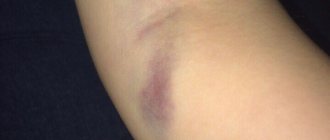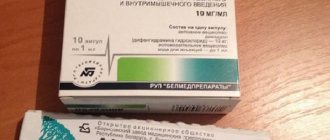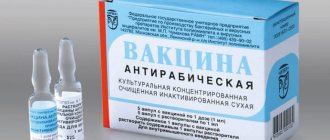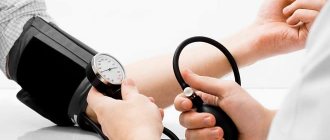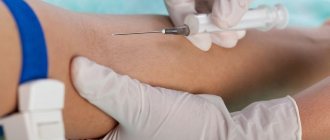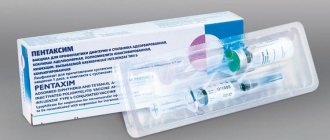Friends, a big hello to everyone.
I went to the district clinic the other day and, sitting in line to see the doctor, I heard out of the corner of my ear the sorrowful sighs of an elderly lady. She told other grandmothers waiting for an appointment about her sores and numerous treatments, but her main pain was how to treat the bumps after injections so that they would resolve. Like, give me some practical advice, otherwise the soft spot will soon turn into armor for the tank.
I listened to them and remembered my childhood, filled with injections and hospitals, when once every 3 months my long-suffering butt was attacked by injections of various anti-inflammatory and vitamin medications. And then I thought that the problem of removing lumps from the butt after numerous injections is relevant for many sick people, both adults and children. In general, I collected all the remedies known to me in a heap and presented them in one article, which I now invite you, my dears, to read.
“Bumps” from injections. What should I do?
Almost everyone has to deal with injections in one way or another during their lives. And very often - with unpleasant consequences after them: painful lumps, popularly called “bumps”.
For the injection to pass without complications for you, you only need two conditions: a high-quality syringe (with a black rubber band) and the slowest possible injection of the medicine into the relaxed muscle. Well, if it was still not possible to avoid compactions, the unsuccessful consequences of injections can be avoided using the experience of traditional medicine.
Iodine mesh
. Apply a “mesh” to the seal area with a cotton swab several times a day.
Honey cake
. Mix 1 tbsp. l. butter and honey with 1 yolk, add flour and knead a soft dough. Make lozenges and apply at night to the area of the seal for several days. You can cover it with cellophane.
White cabbage
. Cut a cabbage leaf with a knife (so that the juice comes out), apply it to the seal area overnight. You can brush a cabbage leaf with honey.
Pickle
. Cut the cucumber into circles along with the skin, select the circles according to the size of the “cones”, attach to them, and secure with adhesive tape. It is better to perform this procedure at night. In the morning, the “bumps” from the injection should disappear. Potatoes have a similar effect.
Cranberry
. Mash the cranberries, place the pulp on the “bumps” from injections, and cover with pieces of cellophane. Leave it overnight.
Cheese
. Attach a piece of thinly sliced Poshekhonsky cheese to the sore spot with an adhesive plaster overnight. In the morning, remove and wipe with alcohol. In the evening, apply cheese to the “cones” again. Carry out the procedure within 7 days.
Honey and burdock
. To get rid of seals at the injection sites, for several days, lubricate the injection sites with honey and apply a burdock leaf at night.
Propolis tincture
. Apply a compress with alcohol tincture of propolis overnight.
Kefir
. Soak pieces of bandage in kefir, apply to the “bumps” and make a compress overnight.
Soda
. Dissolve 1 dessert spoon of soda in a glass of water, moisten a napkin, cotton wool or bandage, apply to the injection site, tie with a towel and leave overnight.
Laundry soap
. Lather a piece of clean cotton cloth soaked in hot water with soap and apply it to the injection bumps. Carry out the procedure until the “bumps” are completely resolved.
Massage
. If “bumps” appear on the buttocks, massage them daily with clean hands until the lumps dissolve.
Prevention measures
: after each injection, soak a cotton swab in vodka (alcohol) and, applying it to the injection site, massage the sore spot well.
If the injection site is hot to the touch, red, painfully throbbing, and you observe severe swelling, you most likely have begun to develop an abscess. Contact your surgeon immediately.
Source
What to apply to the bumps after injections?
You need to get rid of the consequences of unsuccessful injections in accordance with your doctor’s recommendations.
However, the simplest and surest way is to apply an iodine mesh to the tumor site. By warming the sore spot, it dilates blood vessels and accelerates metabolism at the site of the tumor, which, with regular use (2-3 times a day), will disappear within 3-5 days.
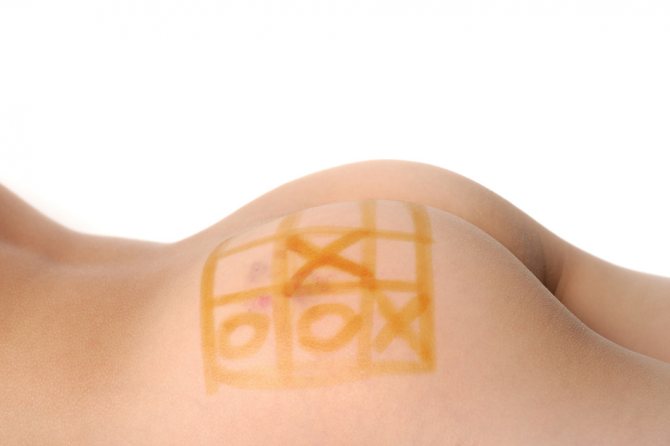
Iodine mesh will get rid of bumps and lumps at injection sites
You can also use various ointments (Vishnevsky, heparin) and compresses.
Lumps and lumps after the injection. Traditional medicine tips
Article updated: 2021-03-04
Many medical workers give injections to patients and do not care at all about what will happen to this injection site. Injected, and goodbye! As a result, there is a lump at the injection site - a painful lump under the skin, which sometimes may require surgical removal.
But precautions are a simple matter, and if you follow them, problems can be avoided.
So, after you have been given an injection, you need to massage the injection site well with a cotton swab moistened with alcohol (1:1) or vodka diluted with water (and so on after each injection). And if there were a lot of injections, then be sure to apply a warm heating pad (not hot!) to the injection site for 5-10 minutes in the evening.
You can also lubricate injection sites with iodine or make an iodine mesh at the injection site. Well, if you didn’t take care and a lump still formed, then make vodka or soda compresses at night. Read more information on how to make a compress correctly here
Do not forget about massaging the lump, massage all the time - until the lump resolves. With a clean, washed hand, thoroughly massage the injection site, then wipe the injection site with a cotton swab soaked in vodka (alcohol solution). Instead of vodka or alcohol, you can use pharmaceutical alcohol solutions (tinctures), for example, salicylic alcohol, boric alcohol.
Old bumps can be treated by applying cakes made from rye flour, honey and chamomile infusion. Instead of chamomile decoction, you can use a soda solution. Apply the cake at night.
And here are some more recipes from traditional medicine on what to do to make the bumps resolve after injections.
Mix 1 tbsp. honey, 1 tsp. iodine and 1 tbsp. Epsom salts (magnesium sulfate heptahydrate). Make compresses from this mixture in the morning and evening.
Grate equal amounts of laundry soap and onion, add exactly the same amount of alcohol and honey, mix well, transfer to a jar. For treatment, take 1 tsp. mixture, warm up a little, spread on a bandage and apply to the bump. Apply cellophane and a thick layer of cotton wool on top. And at night, apply a warm heating pad on top.
Grind two parts of baked onions and one part of laundry soap and mix well. Apply the resulting pulp to the bump once a day. This remedy can dissolve not only cones after an injection. Onions and laundry soap also help to quickly ripen abscesses and cleanse boils.
If you have nothing at hand at all - no alcohol, no soap, no onions, etc., then simply apply cellophane to the seals. Secure the cellophane with a bandage and walk around with it. The area under the cellophane will heat up and the seal will dissolve.
And here is a recipe from old grandmother’s recipes - what to do if an abscess appears after an injection. Ingredients: rye bread + honey + hungry saliva + kirkazon leaf. Chew black rye bread, moistening it in your mouth on an empty stomach with morning (hungry) saliva. Add 1 tsp. honey Place this mixture on a sheet of Kirkazon soaked in hot water. Apply the sheet with the mixture to the abscess. When the sheet dries out, replace it with a new one. Do this until the sheet is clean, without any rubbish that it pulled from the cones.
Honey and urine. In order to get rid of lumps after injections, you can also put gauze (a cloth) soaked in a mixture of urine and honey at the injection site overnight. Cover the top of the gauze with cellophane and a warm woolen scarf. It only takes a few treatments for the lumps to disappear.
Source
Magnesia for cones after injections
A medicine such as magnesia has been used in medicine for a long time and is either a white powder or a solution with magnesium sulfate as the main component.
Magnesia compresses are rarely used in therapy, but in some cases they can show good results.
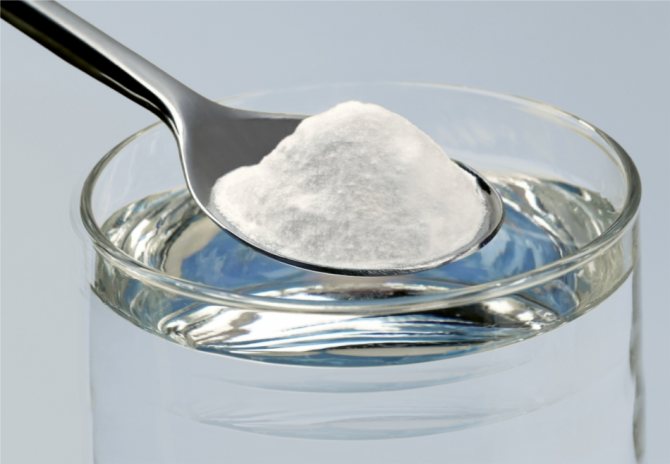
Magnesia powder for cones after injections
To get rid of infiltration (compaction), you need to moisten the bandage in a magnesium solution, squeeze it out lightly, apply it to the sore spot, cover it with film, insulate it with cotton wool and secure it with an adhesive plaster.
However, you need to remember that this medicine is effective when wet, so you need to systematically change the compress (every 2-3 hours).
There are also side effects: an allergic reaction to the components of the drug is possible.
Epidemiology
- According to statistics, post-injection abscesses develop more often in patients over 50 years of age. In second place are patients from 30 to 50 years old, but there are approximately two times fewer of them than in the first group.
- Abscesses after injections occur more often in women. Experts attribute this to the fact that in women the subcutaneous fat layer is more pronounced than in men.
- The majority of post-injection abscesses occur when performing injections independently, at home.
- Most often, abscesses occur after injections of magnesium sulfate and painkillers (analgin, baralgin, etc.).
- The risk of developing abscesses after injections is higher in those patients who suffer from diabetes or immunodeficiency diseases.
[6], [7], [8], [9], [10], [11], [12]
Causes of post-injection abscess
The main reason why a post-injection abscess most often forms is considered to be ignoring the rules of disinfection during injection. Thus, bacteria can enter the patient’s skin through the unwashed hands of medical staff, through unsterile syringes or an injected solution, or from poorly treated skin of the person undergoing the procedure.
In addition to failure to comply with proper disinfection measures, there are other known risk factors that can lead to the appearance of an abscess after an injection:
- Incorrect administration of medicinal solutions (for example, if a drug for subcutaneous administration is administered intramuscularly, the medicine is not distributed throughout the tissues, but is converted into an inflammatory infiltrate, which then turns into a post-injection abscess).
- Incorrect injection (for example, if you use a shortened needle for an intramuscular injection, or insert it not deep enough, the medicine simply will not enter the muscle, but will remain in the overlying layers of the skin).
- Long courses of injections performed on the same area of the body.
- A small muscle layer against the background of an increased fat layer (for example, in an obese person, even a standard needle inserted before the cannula may not reach the muscle layer).
- Damage to the vessel during injection, when interstitial hemorrhage occurs with subsequent formation of an abscess after the injection.
- Failure of the patient to comply with hygiene rules (if the patient constantly touches or scratches the area where the injection was given).
- Dermatitis and other skin diseases, especially in those places where injections are usually given.
- Severely weakened immunity, autoimmune pathologies, hypertrophied allergic status.
[13]
Dough from old infiltrates
What resolves bumps from injections? If this issue is still relevant for you, you can use grandma’s method, which will help get rid of even the most stubborn seals.
Sometimes the redness goes away, but the hardness remains for a long time. If a person wants to get rid of it as quickly as possible, without waiting for it to resolve on its own, then you can try the following method, which is quite original. Dough is made from butter, one chicken egg, a small amount of wheat flour and honey. A small piece is applied to the skin, and the rest of the mass is stored in the refrigerator and used next time.
Pathogenesis
An abscess after an injection is most often caused by staphylococci or streptococci. When an infectious agent enters, an inflammatory reaction is triggered with further necrosis of the affected tissues, accumulation of exudative secretions and the formation of a cavity element in which leukocytes accumulate.
Such a post-injection abscess is characterized by the formation of a limited capsule with a pyogenic membrane, due to which the penetration of antimicrobial drugs from the blood circulation directly into the inflamed purulent cavity is difficult.
In advanced cases, when the pyogenic membrane is damaged (for example, by purulent melting or by the sudden creation of high intracavitary pressure), the infection enters the bloodstream, which can cause septic complications.
[14], [15], [16], [17], [18], [19], [20], [21], [22], [23]
Symptoms of post-injection abscess
The first signs of an abscess after an injection can be observed already in the initial stages of development. Initially, a compaction is formed without clear contours, and only after that a true post-injection abscess gradually appears, which has well-known characteristic symptoms - pain, redness, tissue swelling, mobility of the capsule, high temperature.
If the lesion is located in the superficial tissues, then the mobility of the capsule (the so-called fluctuation) can be noticed almost immediately, and if the lesion is deeply localized, it is sometimes necessary to use additional diagnostic methods (ultrasound, puncture).
An abscess after an injection into the buttock can be quite deep - this must be taken into account when prescribing treatment for an abscess.
An abscess on the arm after an injection most often has a superficial location.
An abscess on the thigh after an injection is particularly painful, since the thigh muscles have a large number of nerve endings. In addition, this type of post-injection abscess may be accompanied by a slight muscle spasm and muscle twitching.
For convenience, we can highlight local and general signs of the development of a post-injection abscess:
- Local signs include: redness of the place where the injection was given;
- swelling;
- pain when pressing;
- pain without pressure;
- mobility of the capsule (as if “playing” between the fingers);
- local temperature increase.
- feeling of weakness, fatigue;
How does an abscess start after injections?
- After an incorrectly administered injection, a compaction (the so-called infiltrate) first forms at the injection site, which, under favorable circumstances, resolves, and under unfavorable circumstances, transforms into an abscess: pain appears when pressing on the compaction, then pain without pressure, redness and other signs listed above .
An abscess after an injection in a child often occurs in response to vaccines. First there is pain and a small nodule, which later turns red and swells. This reaction is explained by the accumulation at the site of injection of a foreign substance of a huge number of lymphocytes, which are responsible for the body’s immune defense. Normally, the external reaction with redness should be slight, and the seal should resolve on its own. This process should not be accelerated, since a false abscess can develop into a full-fledged post-injection abscess, which will have to be opened and drained.
The development of an abscess after an injection of medication in a child is sometimes accompanied by a general increase in temperature and pronounced local manifestations. As a rule, the process proceeds quite quickly, with an increase in symptoms. If this happens, then contacting a doctor should not only be mandatory, but also immediate: a correctly performed injection should not have the reaction described above.
The impact of infiltration on health and well-being
Some people tolerate them without any complications or discomfort, waiting until the lumps begin to resolve naturally, but in most patients the appearance of lumps is accompanied by the following symptoms:
- Pain syndrome that has a pressing, pulling or cutting nature. The pain can be quite severe
- Bruising, hematomas. Occurs if blood vessels are injured during the injection process
- Suppuration. May develop if an infection gets into the blood or tissue after the injection
- A noticeable increase in body temperature, chills, fever. May indicate inflammatory processes in the body
- Itching, burning, redness at the injection site. Such manifestations often occur due to the appearance of allergic reactions to the drug administered during the injection.
If you notice such symptoms, you should seek qualified help from specialists; they will prescribe adequate treatment and help you quickly get rid of negative side effects in the form of painful growths and bruises.
Forms
A post-injection abscess most often develops in the form of a purulent infiltrate, clearly limited to the nearest tissues. A purulent abscess after an injection begins with redness and gradual hardening of the lesion. In the final stage, the lesion becomes soft, with a purulent accumulation inside the capsule.
Pus is a mass containing white blood cells, proteins and other structures that act as a limiter on the spread of pathogens. With a purulent abscess, a number of typical signs are always present. These are redness, swelling (swelling), local increase in temperature, soreness and mobility of the capsule. As a rule, such symptoms develop within three to four days from the moment of infection. A general increase in temperature is observed when a post-injection abscess has already formed.
Magnesia solution
This drug is a white powder that has a lot of useful properties. It is also used to dissolve needle bumps. To prepare a compress with magnesium, you will need a piece of gauze or bandage, as well as the preparation itself with a twenty percent solution of the active substance. The compress is moistened with the composition and then applied to the skin. After about seven hours it is removed and the affected area is lubricated with oil. Magnesia has proven itself in the fight against compaction after injections. This remedy can also be used in conjunction with electrophoresis.
Complications and consequences
A favorable difference between a post-injection abscess and other inflammatory-purulent formations is the presence of a dense pyogenic membrane, or capsule, due to which the inflammatory reaction has a clear localization and does not spread beyond its limits.
However, if the purulent process is not treated or treated incorrectly, then the amount of pus in the capsule can reach such a level when its walls cannot withstand it and break through. This condition is accompanied by the penetration of purulent contents into nearby tissues: extensive phlegmonous inflammation is formed, which over time can be complicated by the appearance of fistulas and perforations.
What is dangerous about an abscess after an injection, besides the development of phlegmon? In advanced situations, septic lesions can develop - a generalized infectious disease caused by the entry of bacteria from a localized focus into the general bloodstream. Another common name for sepsis is blood poisoning, which is considered a serious pathology. Also, the entry of pathogenic flora into the circulatory system can result in the development of osteomyelitis, in which purulent-necrotic processes are observed in bone tissue, bone marrow and nearby soft tissues.
[28], [29], [30], [31], [32], [33]
Diagnosis of post-injection abscess
In most patients, the diagnosis of post-injection abscess is established only on the basis of a visual examination and questioning: the signs of such a disease are quite characteristic. Moreover, during the examination the doctor is able to determine the stage of the process:
- at the initial stage, swelling, pain and redness are observed;
- at the next stage, the infiltrate softens, a purulent “corolla” appears, and general manifestations increase;
- in the final stage, spontaneous opening of the abscess occurs.
When examining the patient, the doctor will definitely check the condition of the lymph nodes closest to the inflamed area: they may be enlarged, but there should be no pain in them. If pain is present, then one can suspect the development of lymphadenitis - one of the possible complications indicating the beginning of the spread of infection.
After the examination, the doctor will prescribe the necessary tests, which are taken in the laboratory:
- A general blood test will verify the presence of an inflammatory process. This is indicated by an increase in the level of leukocytes and an increase in ESR.
- Bacterial culture of pus taken from the lesion helps to determine the type of pathogen for more accurate selection of an effective antibacterial drug.
Bacterial culture is not done in all cases of abscesses after an injection: the fact is that the results of such an analysis can only be obtained after a few days. And, since treatment is usually prescribed immediately, the doctor simply prescribes an antimicrobial drug with the widest spectrum of antibacterial activity.
Instrumental diagnostics are also not always used, but only in complex or advanced cases of post-injection abscess. Among instrumental studies, ultrasound scanning, computed tomography or magnetic resonance imaging are most often used.
[34], [35], [36], [37], [38]
If there is an infection
Unfortunately, sometimes the infiltrate turns into an abscess. There are signs by which you can understand that for some reason the bumps have become inflamed after the injections. This indicates that an infection has been introduced:
- After two or three days, the injection site becomes red and instead of shrinking, on the contrary, it increases in size.
- The temperature rises to thirty-eight degrees.
- The injection site expands and noticeably hardens.
- The infiltration becomes extremely painful and causes a lot of inconvenience.
- The patient's general condition deteriorates noticeably. He becomes weak and dizzy.
Is it possible to treat bumps from injections yourself in this case? Experts do not advise self-medication in this case. Sometimes complex treatment consisting of an antibiotic, Nimid and daily application of an alcohol compress helps. However, most people agree to surgery to avoid unwanted consequences.
Therefore, to cure an abscess, you will need the help of a qualified surgeon. The doctor makes an incision and removes the pus. Next, the wound is treated with antiseptics. In addition, the patient will be prescribed a course of antibiotics and anti-inflammatory drugs.
Treatment of post-injection abscess
Treatment of minor post-injection abscesses can be carried out on an outpatient basis. Large and deeply located abscesses must be treated in a hospital. For any type of abscess after an injection, immediate surgical opening of the inflamed area is performed.
Surgical treatment consists of opening and draining the purulent cavity with its simultaneous sanitation. The procedure can be performed using either local or general anesthesia, depending on the situation.
The surgeon makes an incision along the force lines in the area with the most pronounced fluctuation. When examining a pathological focus, he separates all the interchamber membranes to clean out all possible pockets of pus, after which he removes dead tissue. Next, the doctor rinses the cavity with an antiseptic solution, dries it with tampons, and installs drainage to drain the resulting fluid. After this, the wound is sutured.
Another option for the final stage of the operation can be used for deep post-injection abscesses: the doctor drains the cavity under ultrasound control, followed by its disinfection with an antiseptic solution using a drainage device. After the inflammation subsides, the drainage is removed.
After the operation of opening the abscess after the injection, the doctor prescribes empirical antibacterial treatment using penicillins, cephalosporins, fluoroquinolone drugs, and aminoglycosides. If bacterial culture has been carried out with identification of the pathogen, then the drug is prescribed depending on the results of the study.
What medications can be used to treat an abscess after an injection?
For large and deep purulent foci the following is prescribed:
- antibiotics - for example, penicillin in the amount of 600,000 - 1 million units daily;
- sulfonamides - streptocide from 0.5 to 1 g three times a day;
- nitrofuran preparations - furazidin orally, 0.1-0.2 g three times a day after meals, for a week;
- antihistamines that neutralize free histamine - for example, tavegil orally 0.001 g twice a day, or suprastin 25 mg three times a day with food.
If the post-injection abscess was small and superficial, then antibiotic therapy may not be prescribed: treatment is limited to local treatment of the wound - for example, fucorcin or hydrogen peroxide.
When intoxication begins, with fever and headaches, detoxification measures should be taken:
- drink enough alkaline liquid;
- take 200 ml of saline solution intravenously daily for 4 days.
For severe pain at the site of the abscess after the injection, butadione is prescribed 0.2 g three times a day, paracetamol 0.4 g three times a day, antipyrine 0.5 g 4 times a day.
Treatment is carried out for 5-7 days. Occasionally, while taking the above medications, side symptoms may appear, which include indigestion, headache, heartburn, and dizziness. After treatment is completed, the unpleasant symptoms disappear on their own.
B vitamins (especially B6), ascorbic acid, vitamins A and E are natural active substances that help increase resistance and normalize the body's reactivity. They are prescribed as a general strengthening and supportive treatment, taking into account their compatibility with other drugs included in the therapeutic regimen.
Physiotherapeutic treatment
If there are no contraindications, then at all stages of the development of a post-injection abscess, physiotherapy can be prescribed, along with general anti-inflammatory treatment.
- In the first phase of the inflammatory reaction, after surgical opening of the abscess, it is important to reduce swelling and eliminate pain, as well as speed up wound cleansing. This is facilitated by such physiotherapeutic procedures as ultraviolet irradiation, laser therapy, aerosol therapy, ultrasound frequency electrotherapy, microwave therapy, ultrasound therapy, diadynamic therapy, hyperbaric oxygenation.
- In the second phase, procedures should be aimed at reducing the inflammatory infiltrate, improving local blood circulation and tissue nutrition, accelerating tissue restoration and the formation of granulations, and preventing the development of complications. All of the above requirements are met by the following methods of physiotherapy: ultrasonic frequency electrotherapy, ultraphonophoresis, laser therapy, electrophoresis with medications, magnetic therapy, darsonvalization, infrared radiation therapy.
- In the third phase, physical treatment should help accelerate the epithelization of the wound surface and the formation of high-quality scar tissue. Procedures such as drug electrophoresis, ultraphonophoresis, paraffin and ozokerite fingering, and laser therapy are suitable for these purposes.
Heparin ointment for bumps after injections
An effective remedy for eliminating post-injection seals is heparin ointment . The benzocaine contained in this product has a calming and analgesic effect, and heparin will relieve inflammation within 3-14 days (the period depends on the degree of neglect) provided that the ointment is used at least 2-3 times a day. Apply the product only in the direction of the muscle.
Consumer reviews on forums are very optimistic, and the price is reasonable: from 25 to 30 UAH. for 25 grams.
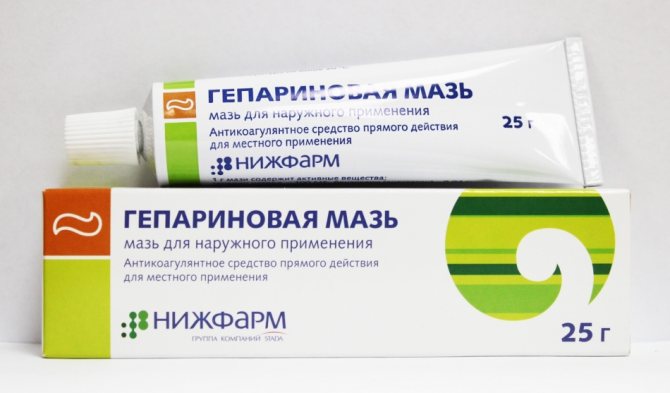
Heparin ointment for bumps at injection sites
Prevention
The following rules should be used as preventive measures:
- For injections, only disposable syringes and needles should be used;
- Do not use blunt or bent needles;
- for intramuscular administration of drugs, needles originally intended for other types of injections cannot be used;
- with frequent injections, it is necessary to change the injection site;
- an injection solution intended for intravenous or subcutaneous infusion cannot be administered for intramuscular injection;
- You cannot administer a drug that is known to be not sterile, or unfit, or that contains foreign impurities or sediment;
- immediately before administering the drug, the skin at the injection site should be disinfected with alcohol;
- during the injection, do not touch the needle with your fingers, even if they are treated with a disinfectant liquid;
- the injection cannot be performed if an interstitial hemorrhage has formed at this site the day before;
- You cannot mix several drugs in one syringe unless you are sure that they are pharmacologically and chemically compatible;
- intramuscular and subcutaneous administration of drugs should not be abrupt so that the drug can be gradually distributed in the tissues.
Injections should be carried out under aseptic conditions, with strict adherence to all rules of disinfection and hygiene.
[54], [55], [56], [57], [58], [59], [60], [61]
Alcohol rub
For patients who are wondering: “What resolves bumps from injections,” doctors advise using medical alcohol as a compress or rubbing. First, it is diluted with water in a 1:1 ratio, after which a piece of gauze or cotton wool, folded several times, is moistened in it. The compress is applied to the skin and covered with cling film. If necessary, the film is secured with adhesive tape. Please note that alcohol can sometimes cause irritation. Therefore, before applying moistened gauze, it is recommended to lubricate the surface of the skin with sea buckthorn oil.
